Visiting Austin, Texas for the first time, I was surprised by the lush greenery which flourished everywhere, even during a heatwave in late June. Even more surprising were the elaborate parks which dotted the city. Zilker Botanical Garden is one such park, housing a fabulous Japanese Tea Garden.

A surprising entrance
Unlike the Japanese gardens in Portland, Oregon, the Zilker garden doesn’t sport fantastic gates or require a long trek up a wooded hill. Visitors pay their entrance fees at a booth and park in a small lot outside the visitor’s center. The gatekeeper pointed us in the direction of a simple, dirt path that wound between labeled plants.
First impressions
My first glimpse of the Japanese tea garden left me somewhat unimpressed. I’m not sure what I expected, but it didn’t appear precise and orderly, in fact, I thought it looked like any other garden.
I was wrong, of course. Always beware of first impressions. This garden is not exactly like other Japanese gardens I have seen, and that is partially because of the climate and landscape in Austin.
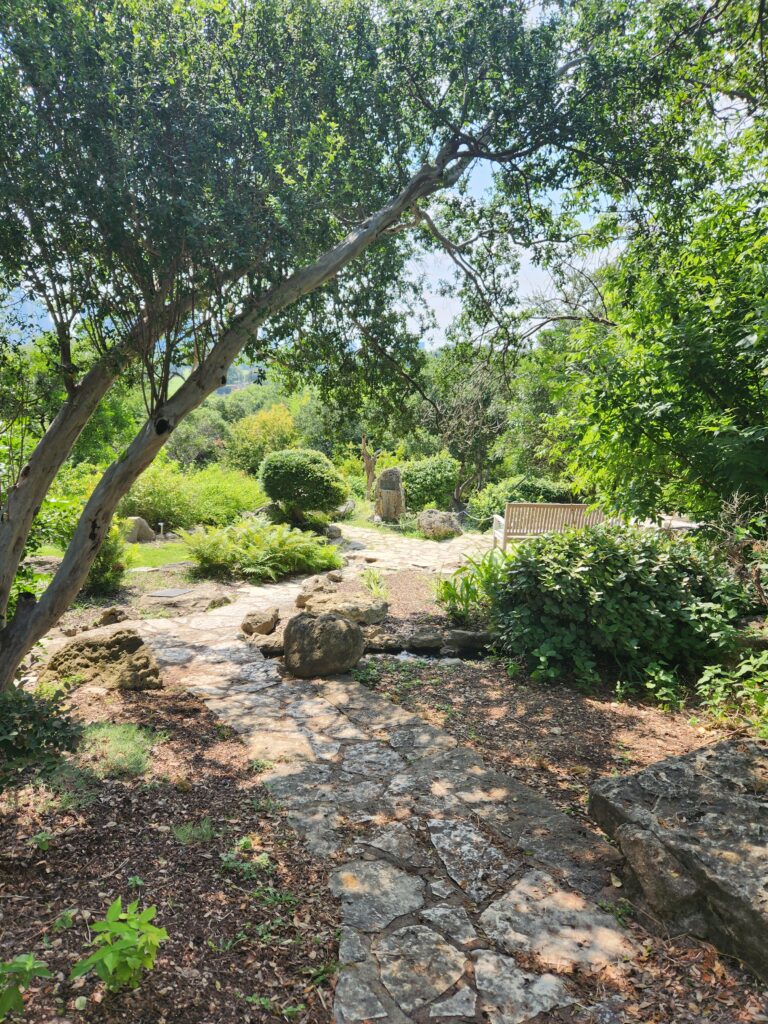
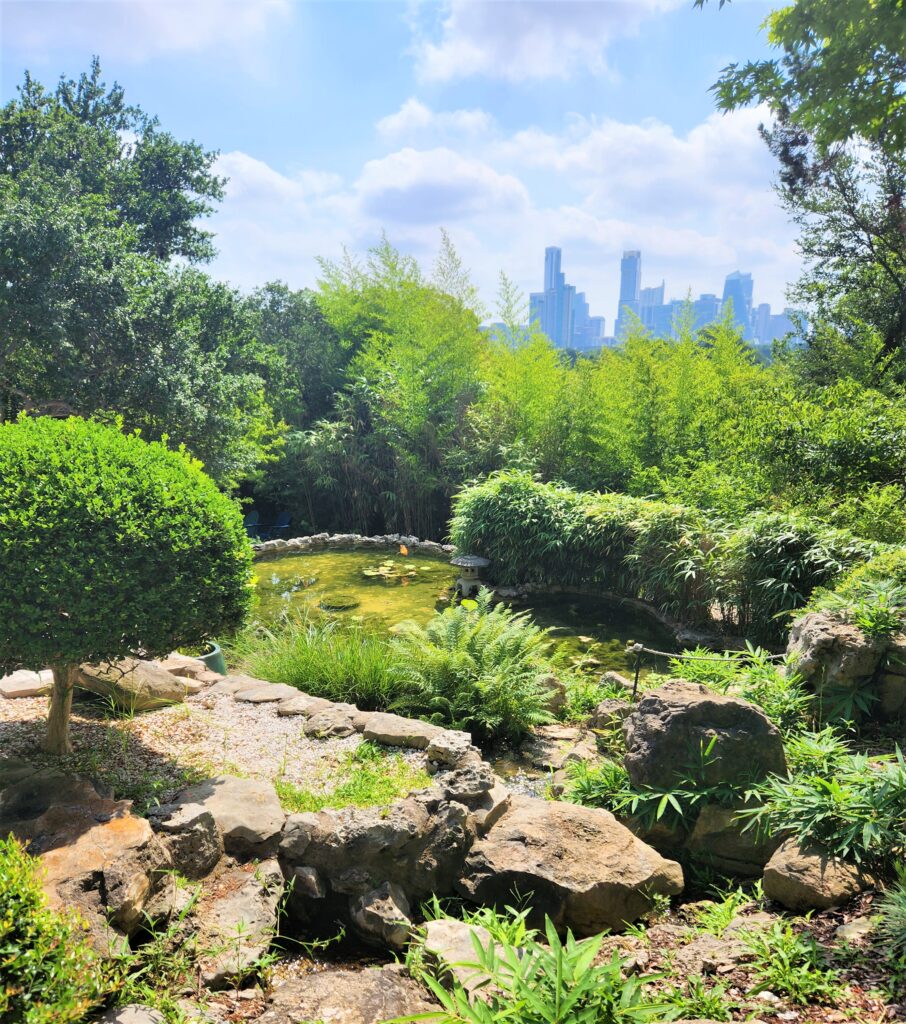
Tiny bit of history
The Zilker Japanese tea garden was built voluntarily by one 70-year-old man over a period of 18 months, and the details are striking. Isamu Taniguchi transformed this limestone hillside into a place of peace and tranquility, one stone at a time, as his gift to the city of Austin.
Garden Elements
The common elements of rocks and water are plentiful here, but rather than ponds dotted with stones, the stones take center stage. This decorative yet primitive-looking set of steps, lined with artistically placed rocks of varying size is a perfect example, underlining stability and permanence.
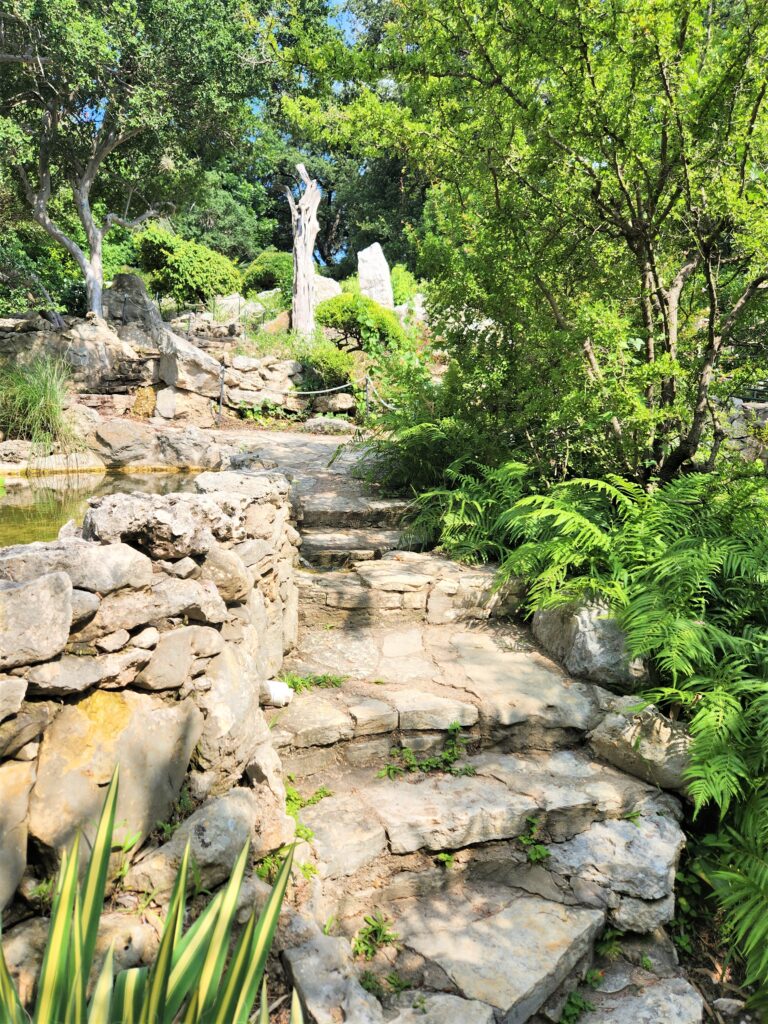
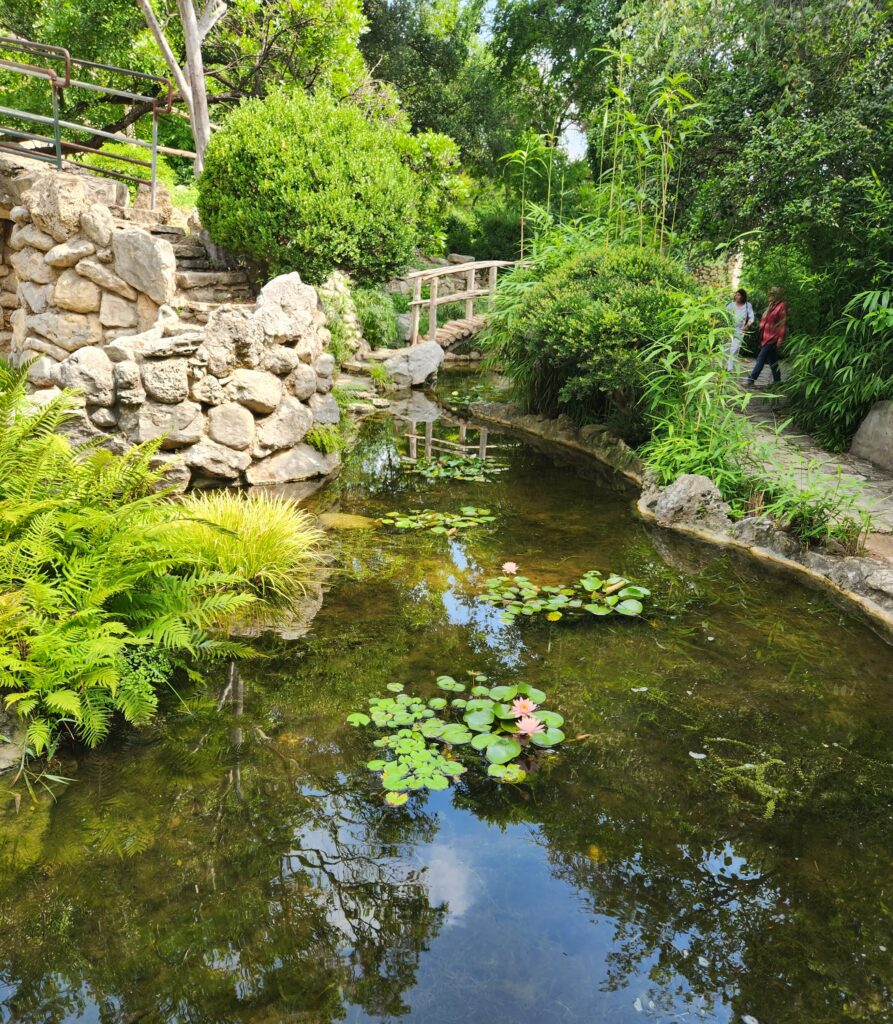
The path weaves back and forth on the side of the hill so a bridge, which might commonly cross a pond to a small island, crosses rather to the side of a stone wall bearing a small waterfall. The creative use of space is phenomenal, while still managing to maintain the traditional elements of a Japanese garden.
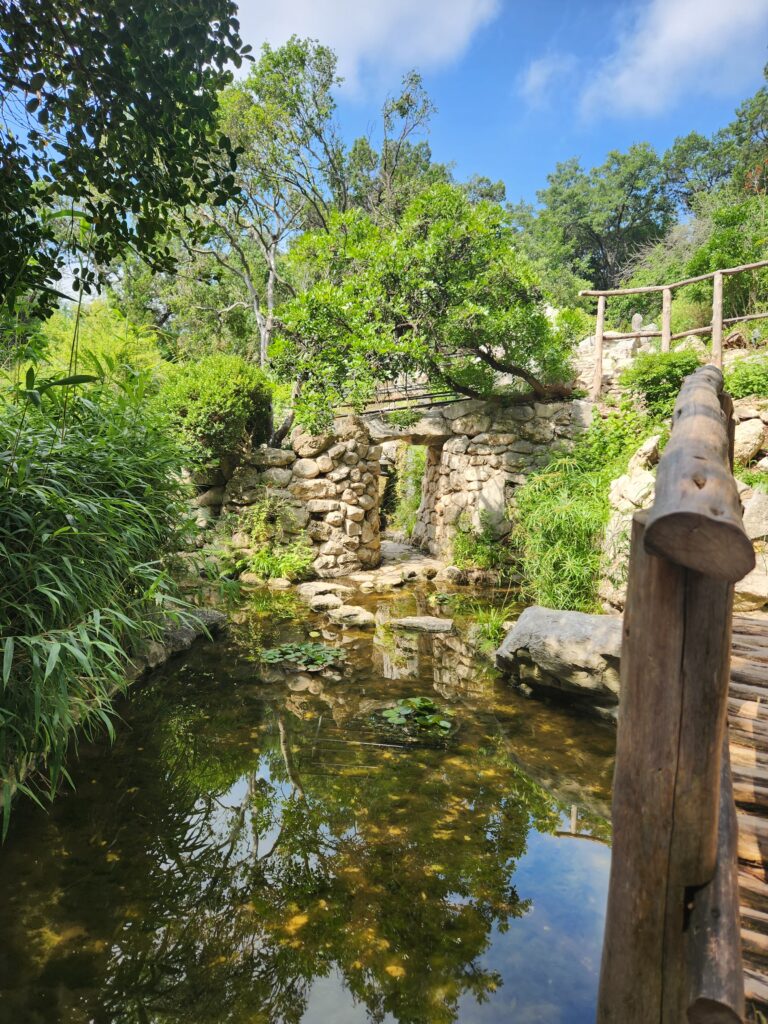
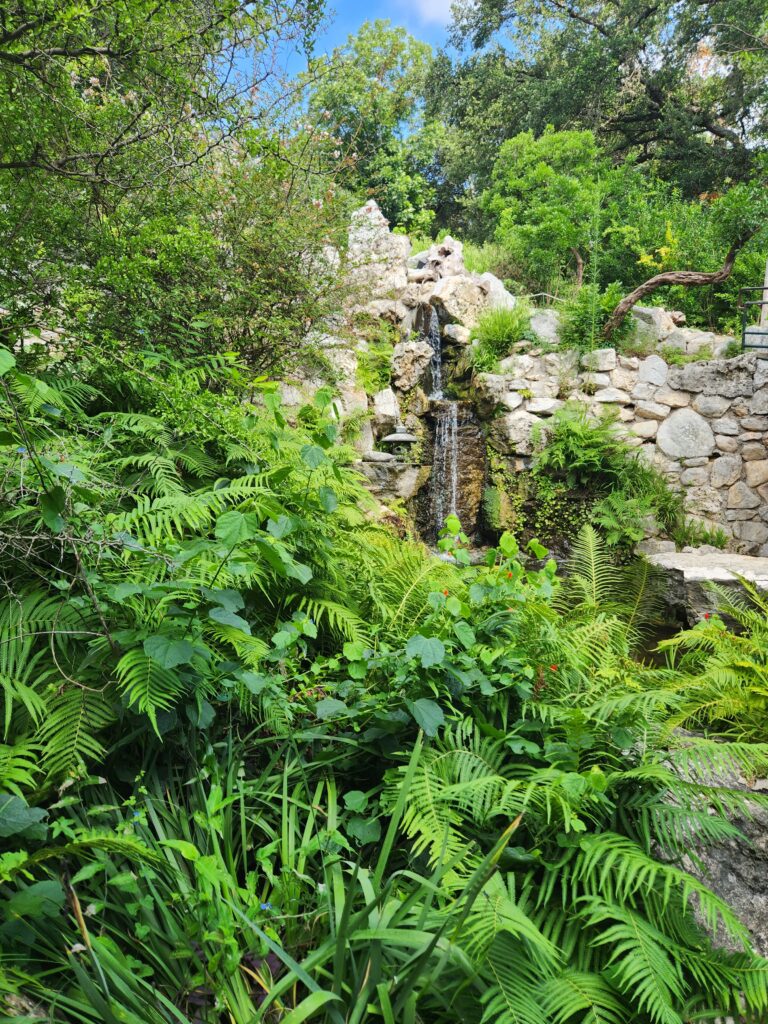
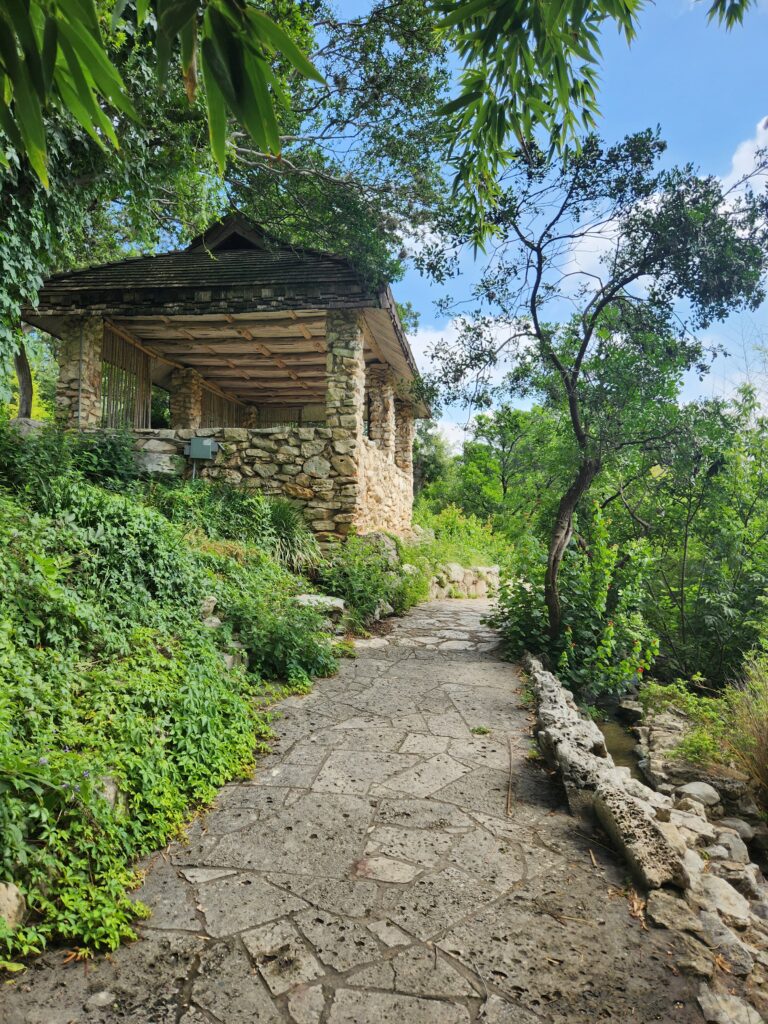
Although I didn’t see any basins, I did spy one stone lantern on the far side of the pond. Every element in a Japanese garden and its precise placement has cultural and spiritual significance. This lantern could represent finding beauty in life’s imperfections, which is exactly what Mr. Tanaguchi did when he created this garden.
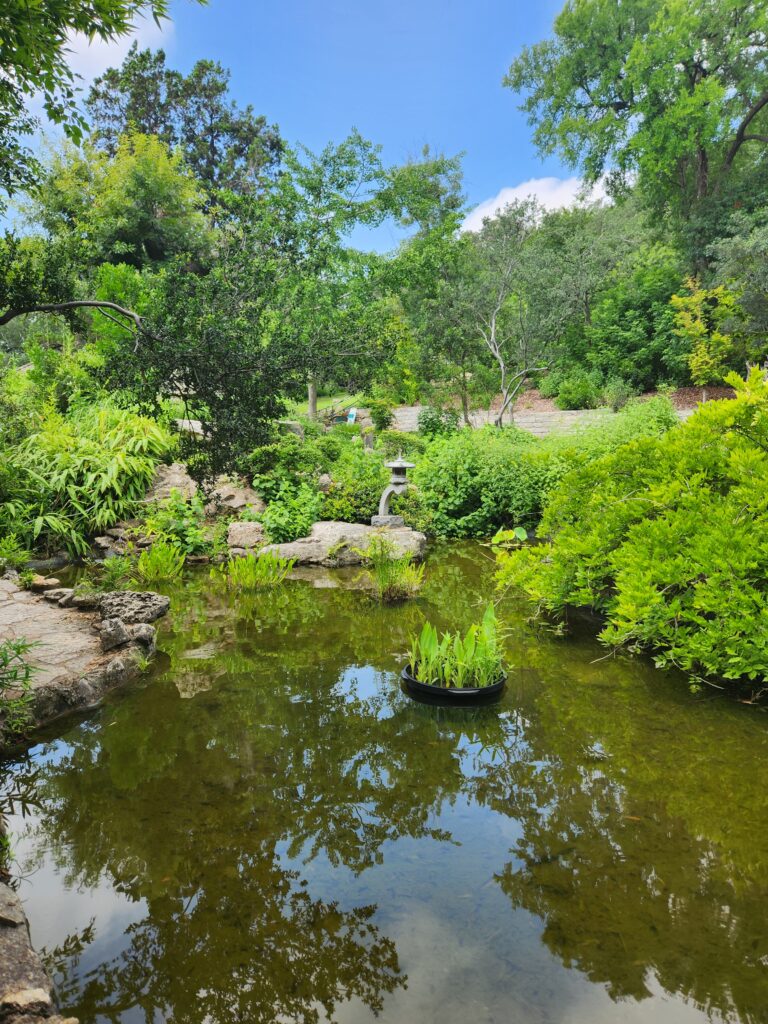
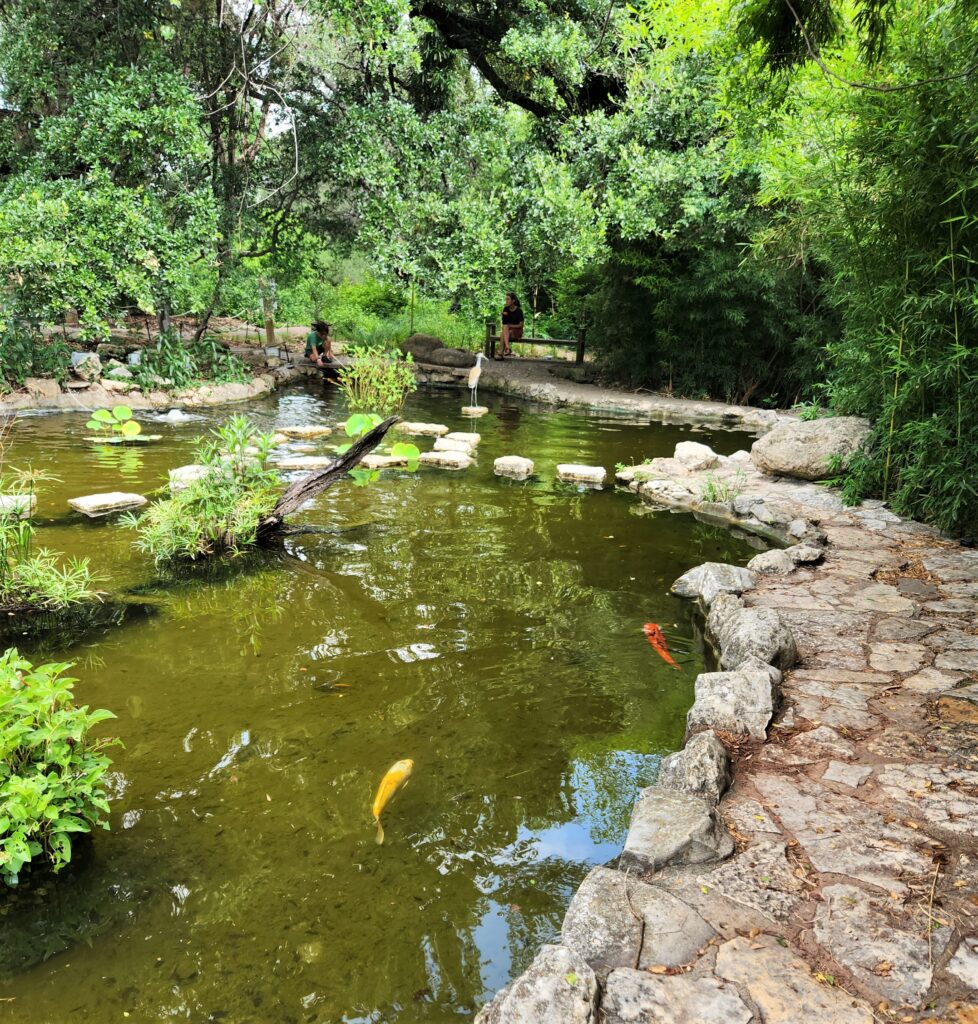
Final pond
In the largest pond, where the path loops around and back, lotus flowers, water lillies, and a school of brightly colored koi add detail and beauty. More stepping stones adorn the pond, and looking back from the end of the loop, the stone lantern sits on the opposite end. This spot embodies the spirit of the Japanese garden and is the perfect place to sit and reflect.
If you find yourself in Austin, I highly recommend a visit to the Japanese tea garden. I am sure you will find some treasures that I missed on my brief visit. The intricate layout and significance of the garden elements are like a fine meal; the more time you take to enjoy it with all of your senses, the deeper your appreciation. Take your time to notice small details, listen to the sounds of the water and the birds, immerse yourself in the tranquility of this special place.
More information
2220 Barton Springs Rd., Austin, TX 78746 Telephone 512-477-8672
Park times: Open daily
Fall and Winter 9-5, Spring and Summer 9-6
Admission: residents and non-residents Youth-$3/4, Adults-$6/8, Seniors-$5/7
Websites of interest
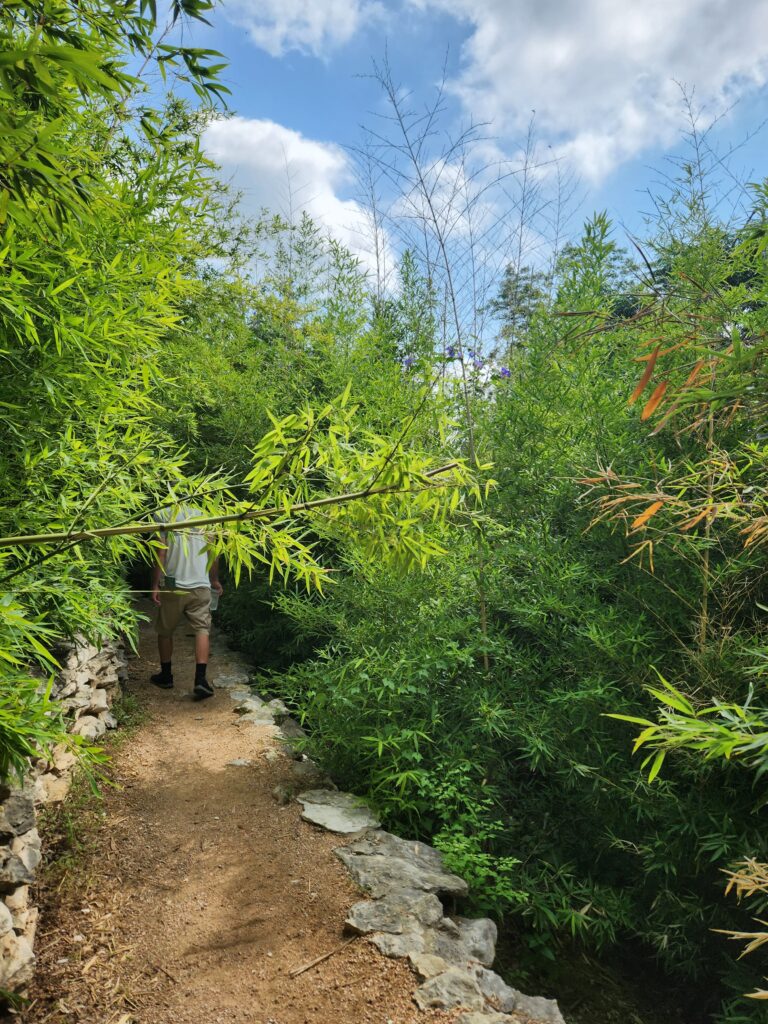
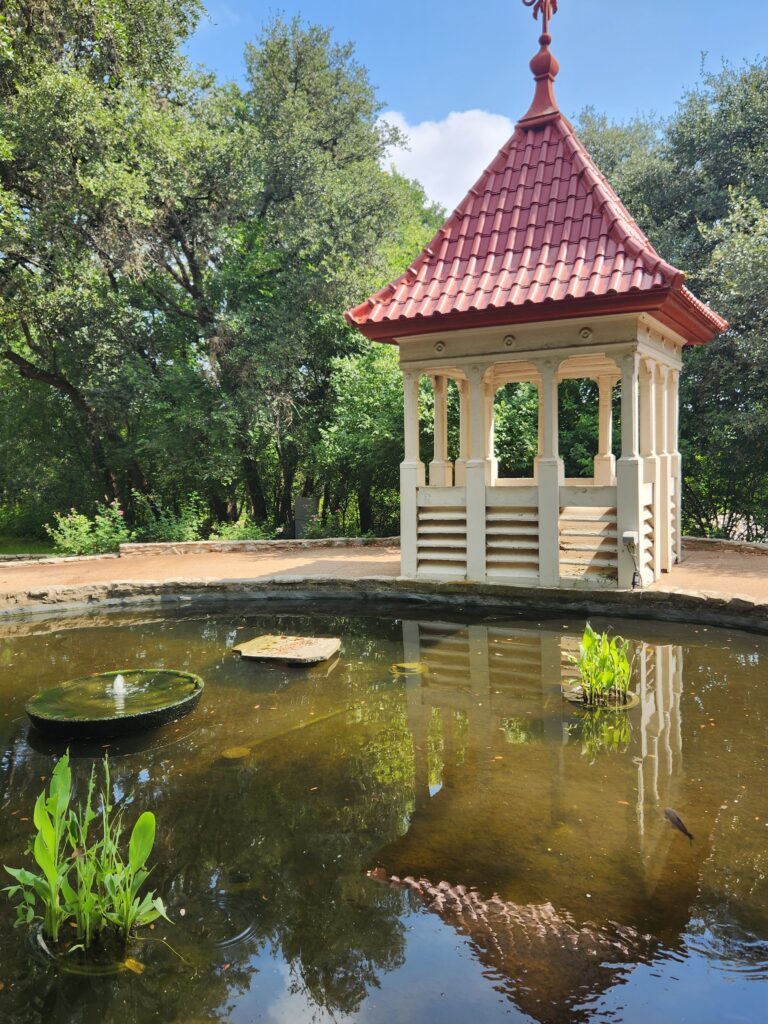
![]()


Isamu Taniguchi was a true master of Peace!
I agree! Thank you for reading, Black Knight.
Wow. It is so beautiful!
Thanks, Barbara! It was one of the highlights of our trip.